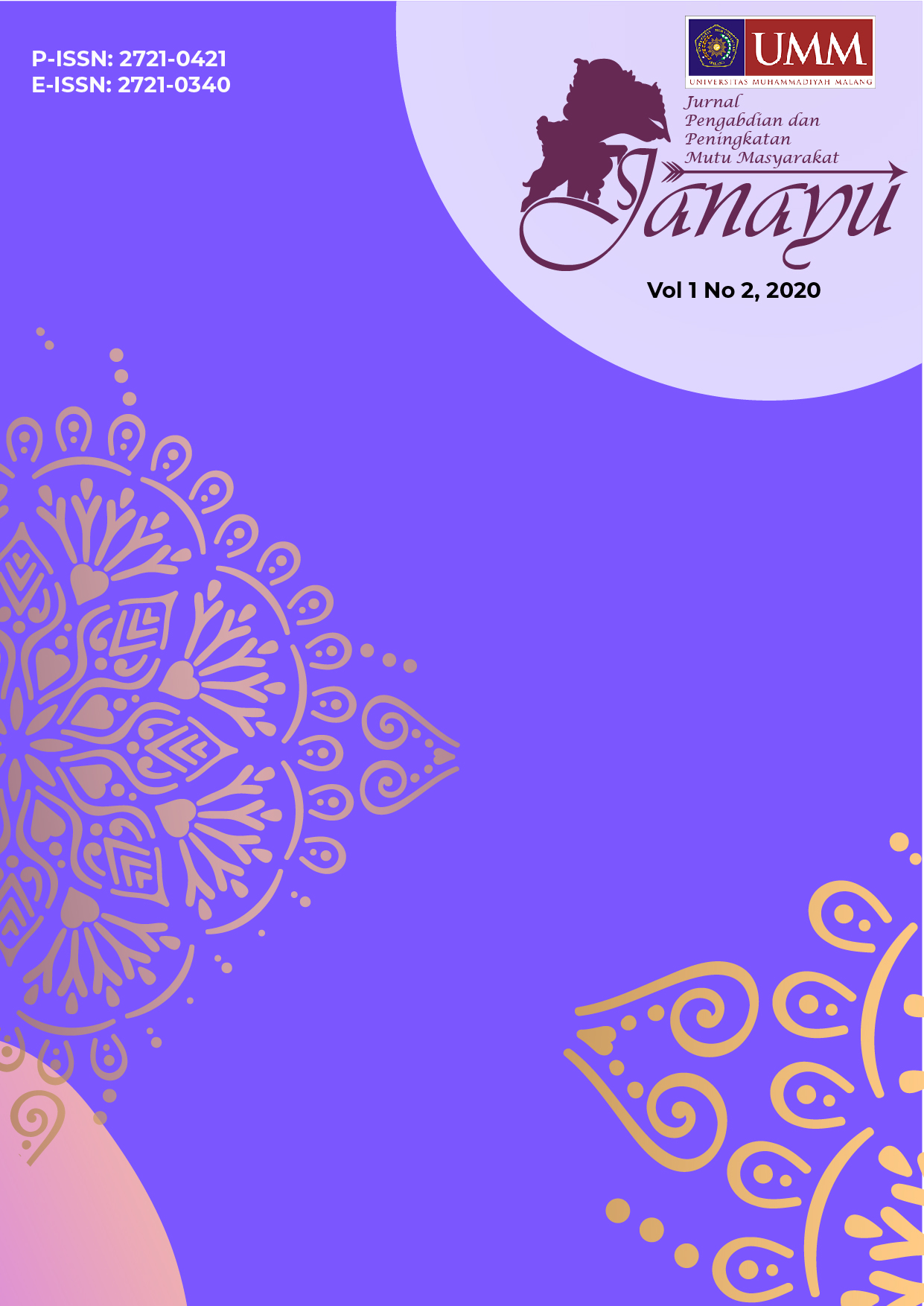PENINGKATAN KEMAMPUAN PEMECAHAN MASALAH SISWA SMP DENGAN MENGGUNAKAN MODUL GEOMETRI RUANG BERBASIS PROBLEM BASED LEARNING
DOI:
https://doi.org/10.22219/janayu.v1i2.12319Keywords:
Module, Problem Solving, Problem Based LearningAbstract
The teaching materials used are also still text books provided by schools. Students are not familiar with contextual questions. To create such a learning process and be able to develop the potential that exists in students, the teaching material developed is a module based on Problem Based Learning (PBL) on Geometry learning Space. The use of appropriate learning media can help students learn and understand the material, so that teachers are expected
to know the meaning and function of a media, get to know as much as possible the media that can be used, choose media that is suitable for the subject matter, can or can use, store and maintain even no less important is the ability of teachers to plan and create their own learning media that can help students understand abstract concepts. To help teachers develop and create mathematics learning media that can improve students' understanding of concepts, learning media are needed that can be used to help students explore material. By Karen, it is necessary to carry out community service activities in the form of Socialization of the Use of Problem Based Learning Geometry Modules in Class IX Students of Adabiah.
Downloads
References
Mulyatiningsih, E. 2012. Metode Penelitian Terapan Bidang Pendidikan. Bandung: Alfabeta
Nieveen, Nienke, dan Elvira Folmer. (2013). “Formative Evaluation in Educational Design Research”, dalam Tjeerd Plomp dan Nienke Nieveen (Eds.), Educational Design Research Part A: An Introduction (hlm. 152-169).
Enschede: slo. Nilssen, Jannike Hegdal. (2015). The challenge of raising the quality of the textbook and its companion website – Just when is less more?. Procedia - Social and Behavioral Sciences 178 ( 2015 ) 164 – 168
Popovici, A., & Mironov, C. (2015). Students ’ perception on using e-Learning technologies. Procedia - Social and Behavioral Sciences, 180 (November 2014), 1514–1519. https://doi.org/10.1016/j.sbspro.2015.02.300.
Sudarwanto dan Hadi, I. 2014. Pengembangan Alat Peraga Pembelajaran Matematika Sekolah Dasar untuk Meningkatkan Kemampuan Berpikir Matematis Siswa. Jurnal Sarwahita, Vol 11 No. 1 hlm. 32-37.
Sukerti, et al. 2014. Penerapan etode Demonstrasi dengan Menggunakan Media Gambar Berseri untuk Meningkatkan Keterampilan Menulis Narasi Siswa Kelas V SDN 3 Dencarik Kecamatan Banjar Tahun Pelajaran 2012/2013. E-journal MIMBAR pGSD Universitas Pendidikan Ganesha Jurusan PGSD Vol 2. No.2
Van den Akker, J. (2013). “Curriculum Development Research as a Specimen of Educational Design Research”, dalam Tjeerd Plomp dan Nienke Nieveen (Eds.), Educational Design Research Part A: An Introduction (hlm. 52-71). Enschede: slo.
Downloads
Published
How to Cite
Issue
Section
License
Copyright (c) 2020 Hafizah Delyana, Radhya yusri

This work is licensed under a Creative Commons Attribution-ShareAlike 4.0 International License.

















